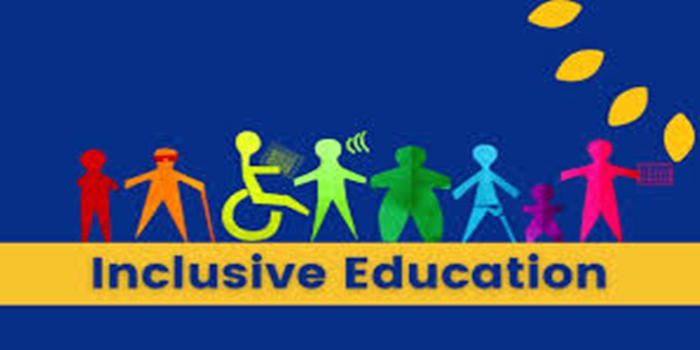In this article, we discussed the meaning of inclusive education, the types, the principles, the important, and the characteristics.
Definition
Inclusive education is a teaching and learning environment that welcomes and supports all students, regardless of their abilities, learning styles, or disabilities. It’s based on the idea that all children have a right to an education.
inclusive education involves
Creates a welcoming environment
Inclusive schools celebrate diversity and build on each student’s strengths.
Removes barriers
Inclusive schools remove discrimination and other barriers so that all students feel like they belong.
Adapts to students
Inclusive schools create learning environments that adapt to each student’s needs.
Uses best practices
Inclusive schools use evidence-based strategies to create optimal learning outcomes for all students.
The main types of inclusive education are;
Full inclusion
All students, including those with disabilities, learn together in the same classroom.
The idea is that everyone belongs in the classroom.
Partial inclusion
Students who need extra support spend most of their time in the regular classroom, but also get extra help outside the classroom.
The principles of inclusive education include:
Equality and diversity
All students have the right to access education and be treated with respect and dignity.
Access and participation
All students should be able to access and fully participate in learning.
Empowerment and autonomy
Students should be motivated and able to take charge of their own learning.
Collaboration and partnership
Educators, families, and students should work together to create an inclusive learning environment.
Universal Design for Learning (UDL)
This approach aims to give all students an equal opportunity to succeed by offering flexibility in how they access and show what they know.
Student agency and self-determination
Students should be supported to express their views and develop their capacity to solve problems, set goals, and make decisions.
Other principles of inclusive education include:
Training teachers in inclusive education
Promoting inclusion through organizational culture and ethos
Creating support structures that promote inclusion
Creating flexible resourcing systems that promote inclusion
Creating policies that promote inclusion
Creating legislation that promotes inclusion.
Inclusive education is important
Because it helps create a level playing field for all students, regardless of their differences. It allows students to learn and develop together, which can benefit everyone.
Academic achievement
Students with disabilities can access the same curriculum as their peers, which can lead to higher academic achievement.
Social skills
Students can learn to eliminate discrimination and cooperate with others.
Sense of belonging
Students feel valued and respected, which can lead to increased participation and learning.
Equal opportunities
Students with disabilities have the same opportunities as their peers, which can help them achieve their full potential.
Community
Students can learn to value the unique contributions of others, which can help build a more inclusive and welcoming society.
How to promote inclusive education
Celebrate diversity and acknowledge the unique contributions of each student.
Provide appropriate accommodations and support to students with disabilities.
Create a welcoming and supportive environment where all students feel valued and respected.
Ensure that students are not ostracized or segregated based on their differences or learning capabilities.
Characteristics of Inclusive Education
Every child has the right to education and has the right to participate equally in mainstream education; inclusive education permits all the children to be admitted in the same schools and attend the same classrooms.
Inclusive education is a responsive process to individual learning needs by providing sufficient levels of support and applying student-centered teaching practices and principles.
It enables each student to fully participate in the learning environment that is designed for all students and is shared with peers in the chosen educational setting.
Target of inclusive education is ensuring full participation and educational attainment of every child, not just school-enrollment.
Education goals are set and developed according to each student’s needs and abilities.
All of the children do not need to have the same education goals in order to learn together in regular classes.
Providing a positive response to children’s diversity and differences is one of the major characteristics of inclusive education.
Inclusive education focuses on meeting the educational needs of all children through quality development of teaching-learning activities.
Through the inclusive education all students receive an education that addresses their individual needs and no student is excluded based on type or degree of disability
Conclusion
Inclusive education is an educational approach that aims to provide all students, regardless of their abilities, backgrounds, or challenges, with equal access to quality education within the same classroom and school environment, ensuring that no child is excluded and valuing the diversity each student brings to the learning process; it focuses on adapting teaching methods and school structures to meet individual needs and fostering a welcoming and supportive learning community for all students.
READ: Educational Technology

